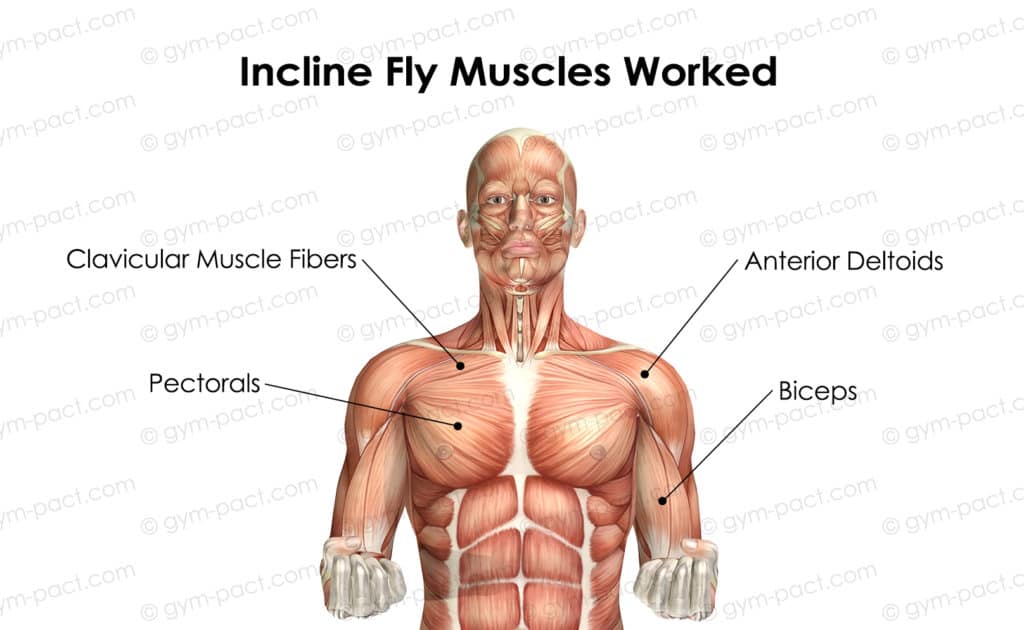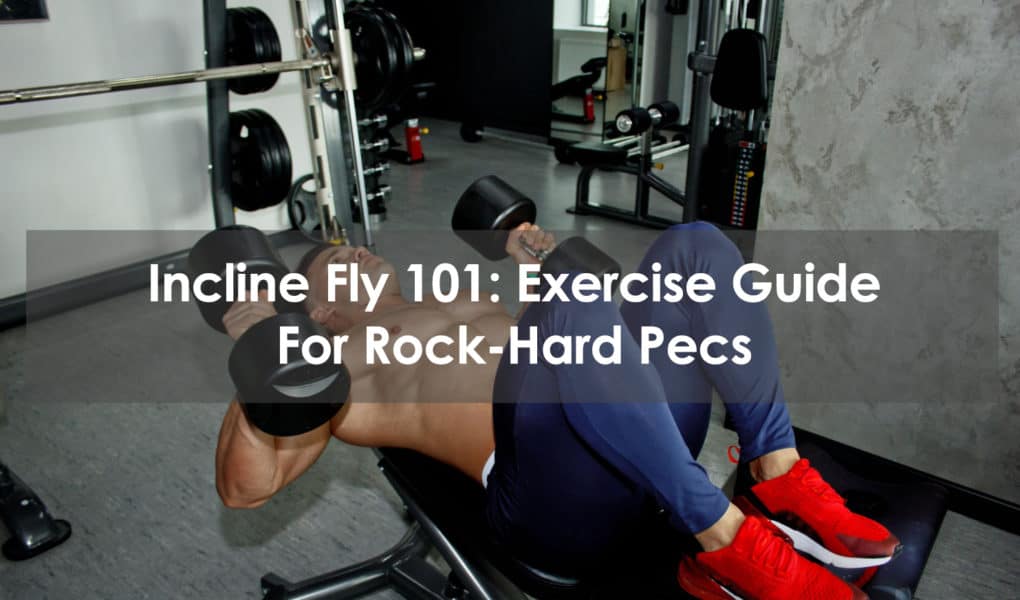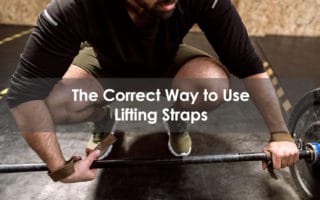Developing a full, rounded chest is the mark of manliness. In order to do it, you need to use a variety of movements to work every single pectoral fiber. That means performing heavy pushing movements and lighter exercises that focus on extension and contraction through a complete range of movement.
The best move to achieve that type of stimulation is the chest fly. The chest fly can be done from a variety of angles. To focus on developing the upper chest, you should do the incline version of this movement.
Incline Fly Benefits
1. Full Pectoral Extension
The incline dumbbell chest fly allows you to stretch, extend and contract your pectoral muscle fibers in a way that you cannot get with a chest pressing movement. Moving through a complete range of motion is key to muscle growth, so adding the fly motion to your routine is essential for full development.
2. Upper Pec Focus
When you perform the chest fly in an inclined position, you are able to focus on the upper pectoral muscle fibers that run from the clavicular head. This is an area of the chest that many people find hard to bring out, so adding the incline fly to your routine makes a lot of sense.
3. Chest Strength
The incline dumbbell chest fly will not only help to build your chest; it will also strengthen it. That will allow you to lift more weight on your pushing movements, such as the barbell or dumbbell bench press exercise. Of course, the more weight you can push on these foundational movements, the more muscle you will be able to build.
4. Shoulder Development
The incline bench dumbbell chest fly also works the anterior, or front, deltoid. As a result, you will develop size and strength in the front delts, making you stronger on your overhead pressing movements.
Muscles Worked

The primary muscle worked when you perform the incline fly is the pectorals. When done on an incline bench position that is angled to about 30 degrees, the exercise will target the upper chest muscles, also known as the clavicular muscle fibers. This exercise uniquely moves the pectoral muscle fibers through a complete range of motion.
The incline dumbbell fly also works the front part of the shoulder muscle. This is known as the anterior head of the deltoids. The higher the angle of the bench you are using, the more emphasis goes on the front delts as opposed to the upper pecs. The ideal angle to work the chest rather than the shoulders is 30 degrees.
The biceps are also involved in this exercise, although there is no dynamic movement of the biceps. The biceps do isometrically support the weight of the dumbbells as you perform the fly action.
How to Perform the Incline Fly
- Set the angle on an adjustable incline bench to 30 degrees. Now grab a couple of dumbbells and lie on the bench, firmly planting your feet on the floor.
- Bring the dumbbells up above your mid-chest level, held at arm’s length with your arms slightly bent.
- Hinge from the shoulder joint to bring your arms out and down to be in line with your torso. Do not change the angle of your elbows; the only movement is through the shoulder joint.
- Reverse the motion to return to the starting position.
Exercise Tips
- Keep your feet flat on the floor to provide stability when you are doing this exercise.
- Focus on opening up the chest as you go down but do not go lower than your shoulder level as this will put unnatural stress on your shoulder joint.
- Be sure, also to only move from your shoulder joint in order to keep the emphasis on the targeted muscle group.
- You do not want to straighten or bend your arms beyond the slight bend with which you start the exercise.
- Bring your shoulder blades in together as you go down.
Common Mistakes to Avoid
1. Wrong Bench Angle
The most common mistake when doing the incline dumbbell fly is using a bench angle that is too high. Most people use a bench that is set at 45 degrees. This is too high to keep the focus on the chest, transferring the emphasis to the anterior deltoids.
2. Elbow Bend
Another common mistake is to bend the elbows when doing the movement. This is usually done as a result of the weight being too heavy. Doing so will transfer the focus to the biceps and may lead to a biceps tear. Keep the weight manageable and focus on doing nothing but pivoting through the shoulder joint.
3. Hip Lift
A third commonly seen error is lifting the hips off the bench while you are doing the exercise. Again, this is usually done because the weight is too heavy. This is counterproductive as it will bring your lats into the movement, robbing your pectoralis major of the benefit you are trying to achieve.
Focus on keeping your hips down throughout the entire exercise motion and use a lighter weight.
Incline Fly Variations
Incline Cable Fly
- Place an incline bench that is set at 30 degrees in the middle of a dual cable pulley machine. Set the pulleys to their lowest level.
- Grab the handles and lie on the bench. Adjust your position so that your arms are out at a 45-degree downward angle. Bend your elbows slightly and then keep them locked in that position.
- Pivot from the shoulder joint to bring your arms up and together to meet above your chest. Lower and repeat.
Floor Fly
- Lie face down on the floor with a pair of relatively light dumbbells in your hands and your knees bent.
- Lift the dumbbells up above your pectoralis major with the elbows slightly bent.
- Bring your arms out and down to the floor.
- Reverse to return to the start position.
Note: This exercise is a good option if you are training at home and do not have access to an exercise bench. You can go slightly heavier with the floor fly version of the movement as there is no danger of overextending the shoulder joint. The floor fly can also be combined with a floor press to extend a set beyond normal muscular failure.
Related Post: Floor Press vs. Bench Press: Which Should You Perform?
The Bottom Line
The incline dumbbell fly is a valuable addition to your chest workouts. It will help you to achieve a complete, fully rounded chest, especially through the upper portion around the clavicle.
Perform the incline dumbbell flye after your main pressing exercise. Remember that it is always better to focus on proper exercise form than the weight you are lifting.
Do 4 sets using a pyramid rep scheme, where you start with 15 reps at a relatively light weight, then add a little weight on each succeeding set as you drop the reps. Your final set should be for 10 reps.
Frequently Asked Questions
Why do incline flys hurt my shoulders?
The reason that incline flys hurt your shoulders is that you have set the angle of the incline bench too high. If you set it too high, the emphasis will transfer from the pectorals to the deltoids. To avoid this, you should set the bench angle at 30 degrees, which will shift the focus to your pec muscles.
Another reason that flys may hurt the shoulders is that you are going down too low in the bottom position of the exercise. You should not take your arms lower than the level of your shoulders to avoid overstressing the shoulder joint.
If you are experiencing shoulder pain when doing flys, use a lighter dumbbell and focus on proper form.
Are incline flys better than flat?
It is commonly believed that incline flys are better than flat bench flys because they allow you to target your upper, or clavicular, pectoral muscle fibers. There is debate on this issue, however, with EMS studies showing that a fly exercise will achieve muscle activation in all of your chest muscle fibers regardless of the angle at which you are performing the movement.
At the end of the day, you should experiment with both types of fly movement to determine which one works best for you.
What is a good weight for chest flys?
The chest fly is an isolation exercise that necessitates a lighter dumbbell than pushing chest movements. You should use a weight that allows you to use the correct exercise form for 10-15 reps.



